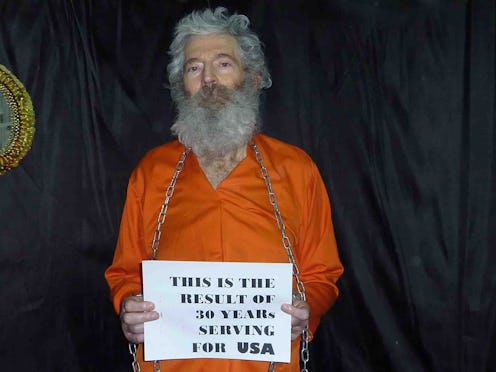News
Well, This Sounds Like a 'Homeland' Plot

For years, the official story has been that Robert Levinson, an American kidnapped in Iran in 2007, was a private citizen on a business trip. Now, after a years-long investigation, the AP is reporting that Levinson was actually working for a rogue CIA faction, under a group of analysts that had no authority to run spy missions, trying to gather information on Iran’s nuclear program. The CIA reportedly paid Levinson’s family $2.5 million in hush money to keep quiet about his involvement, and the AP itself agreed on three occasions to hold off on publishing the story while the U.S. government sought leads as to Levinson’s whereabouts. After those leads all came up dry, the AP went ahead and published the story Thursday.
Levinson was kidnapped from Kish Island off the coast of Iran in March 2007. In late 2010, his family said they’d received “irrefutable” proof that he was still alive, and the next year, they released it: A hostage video of Levinson, dated November 2010. The clip showed a notably skinnier Levinson pleading the government to step up its efforts to release him. Since then, there’s been no contact from Levinson’s captors, the identify of whom are still unknown. If he’s still alive, he’s the longest-held American captive on record.
From 2007 until as recently as a month ago, the government has maintained that he was a private investigator looking into a cigarette smuggling case. Levinson had, in fact, worked for the government for decades, first at the DEA and then for the FBI.
Before he retired from the bureau, he struck up a friendship with Anne Jablowski, an analyst at the CIA. Both were experts in Russian organized crime and money laundering, and after Levinson retired from the FBI, Jablowski tapped him to give presentations to the agency. That slowly evolved into intelligence work, and soon, Levinson was sending up to 20 packages to the agency per month, full of photos, documents, and computer disks.
The problem was, the group of analysts who hired him weren’t authorized to hire him. They weren’t authorized to hire any spies, because they were analysts, and that’s not what analysts do. To circumvent this, Levinson was asked to send the fruits of his labor directly to Jablowski, not the CIA office, and to contact Jablowski at her personal email address if anything went wrong during his missions.
On the day he went missing on Kish island, he had just met with Dawud Salahuddin, an Iranian dissident and admitted murderer who maintained ties to reformist factions in the government. Shortly after the meeting, Levinson stepped into a taxi cab, and hasn’t been seen since.
After his kidnapping, Congress and the FBI asked the CIA whether he’d been working for the agency. Jablowski denied that he had been, and the CIA formally told Congress that Levinson hadn’t been doing intelligence work. But then, a friend of Levinson did some digging, and discovered the emails between the two. This friend then wrote to the Senate Intelligence Committee about his findings, and the whole thing blew up. Three of the CIA analysts running the unauthorized mission were fired, seven others were disciplined, and their superiors at the agency realized that they’d unwittingly lied to Congress.
Iran, including President Hassan Rouhani, claims to have no idea who kidnapped him or where he is. However, Iranian media reported in 2007 that he's in the hands of the country's security forces, and the interagency task force assigned to his case has determined that an Iranian contingent — and not, say, someone involved with Russian organized crime — is responsible for his kidnapping. Last year, the FBI offered a $1 million reward for any information as to his whereabouts. He hasn't been heard from since.